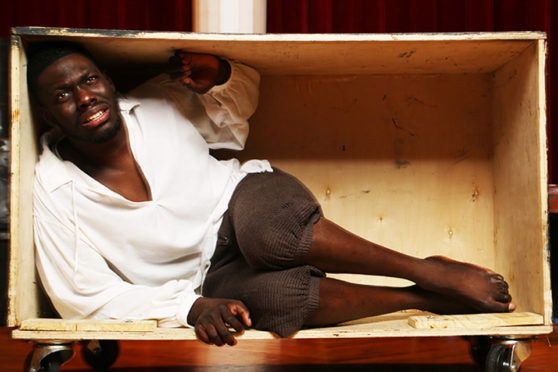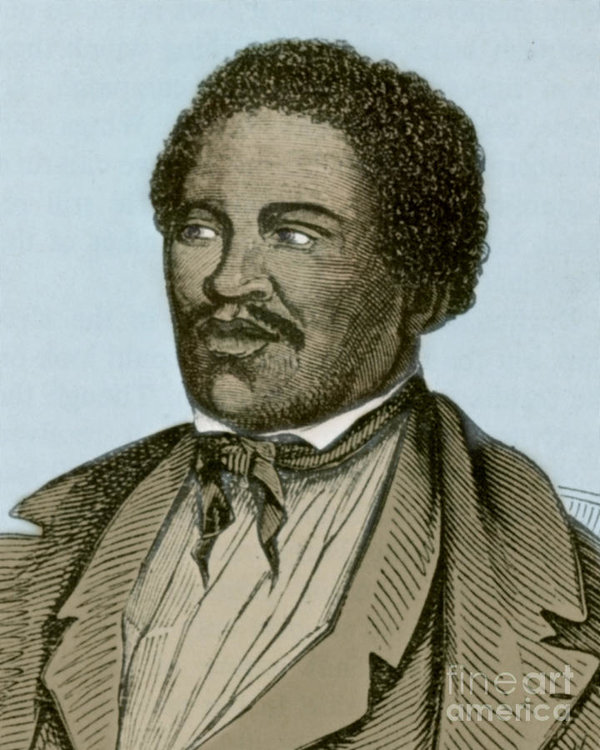
He was a slave who seized back his freedom in the most spectacular way.
Henry Box Brown posted himself across America in a 3ft by 2ft box, risking suffocation during the 27-hour journey.
A musical inspired by his story will be performed at the Fringe this summer, but the creative team has discovered it is following in Henry’s footsteps.
He, too, had come to the UK in 1850 and toured around the country, including many dates in Scotland, with a show full of songs and sketches that described his escape and highlighted the evil of slavery.
Mehr Mansuri, the musical’s New York-based writer, said: “When we researched his story we lost track of him when he came to the UK, so it was a great surprise upon our arrival here to find out how incredible the tour had been and how he was embraced by the Scottish people.
“We feel when we enter Scotland, it’s where he truly found his freedom and artistry. It feels like he was the original Fringe performer.
“It’s wonderful to walk in those steps as a theatre company and we feel we are helping him with his vision.
“Our cast is very interested in anyone out there who knows anything more about his travels around Scotland and where he visited.”
During a trip to Edinburgh last year, the cast and crew visited the Abraham Lincoln monument in Old Calton Cemetery, a memorial to the Scots who fought for the Union during the American civil war.
“We really want to immerse ourselves in the history of the Scots and how they came to be champions of this cause,” Mehr continued.
“We plan on extending the musical from one to two hours, and the final chapter will be about his time in the UK.
“The show is as much about the abolitionists as it is about Henry, whether the sacrifice came from Philadelphia or from Kirkcaldy.”
Henry, who adopted his Box nickname, was born into slavery on a plantation in Louisa County, Virginia, in 1816. He later married another slave, Nancy, but when she and their three children were sold, he devised a plan with two abolitionists – one black, one white – to escape to Philadelphia, part of a free state.
The box was transported by wagon, railroad, steamboat, wagon again, railroad, ferry, railroad, and finally delivery wagon.
Two months after his escape, Henry was speaking at an anti-slavery convention in Boston, when he was given the nickname Box.
The moniker stuck and he incorporated it into his offical name going forward.
The daring getaway in 1849 is said to have prompted the passing of the Fugitive Slave Law the following year, which stated that all escaped slaves, upon capture, be returned to their masters, and officials and citizens of free states had to co-operate.
The new law made Henry flee to the UK, where he arrived in Liverpool.
The show’s co-director Najee Brown said stories like that of Henry Box Brown are not told in America.
“I’m a 28-year-old black American and I don’t believe our country will ever properly heal from the wounds of slavery, and that’s because we never confront it,” he said. “We sweep it under the rug, try to act like it only lasted a short time. We don’t expel the pain and the hurt it confronted people with.
“Henry’s story still resonates today. Look at what’s happening across the world. Everyone feels their voice is more important than everyone else’s, and in turn we all feel our voice is being overlooked.
“If we all come together and realise no one person is more important than the other, or more superior, we would be on a better footing. That’s the power of the show – it demonstrates what you can do if come together and make sacrifices for others.”
Henry lived in the UK for 25 years and became a renowned showman, performing magic tricks after he left the abolitionist circuit.
He married an English woman, Jane, and started a new family.
He returned to America with his second family in 1875 and continued to perform. He passed away in Toronto, Canada, in 1897.
Henry Box Brown, The Gilded Balloon Patter Hoose, July 31-Aug 26

Enjoy the convenience of having The Sunday Post delivered as a digital ePaper straight to your smartphone, tablet or computer.
Subscribe for only £5.49 a month and enjoy all the benefits of the printed paper as a digital replica.
Subscribe